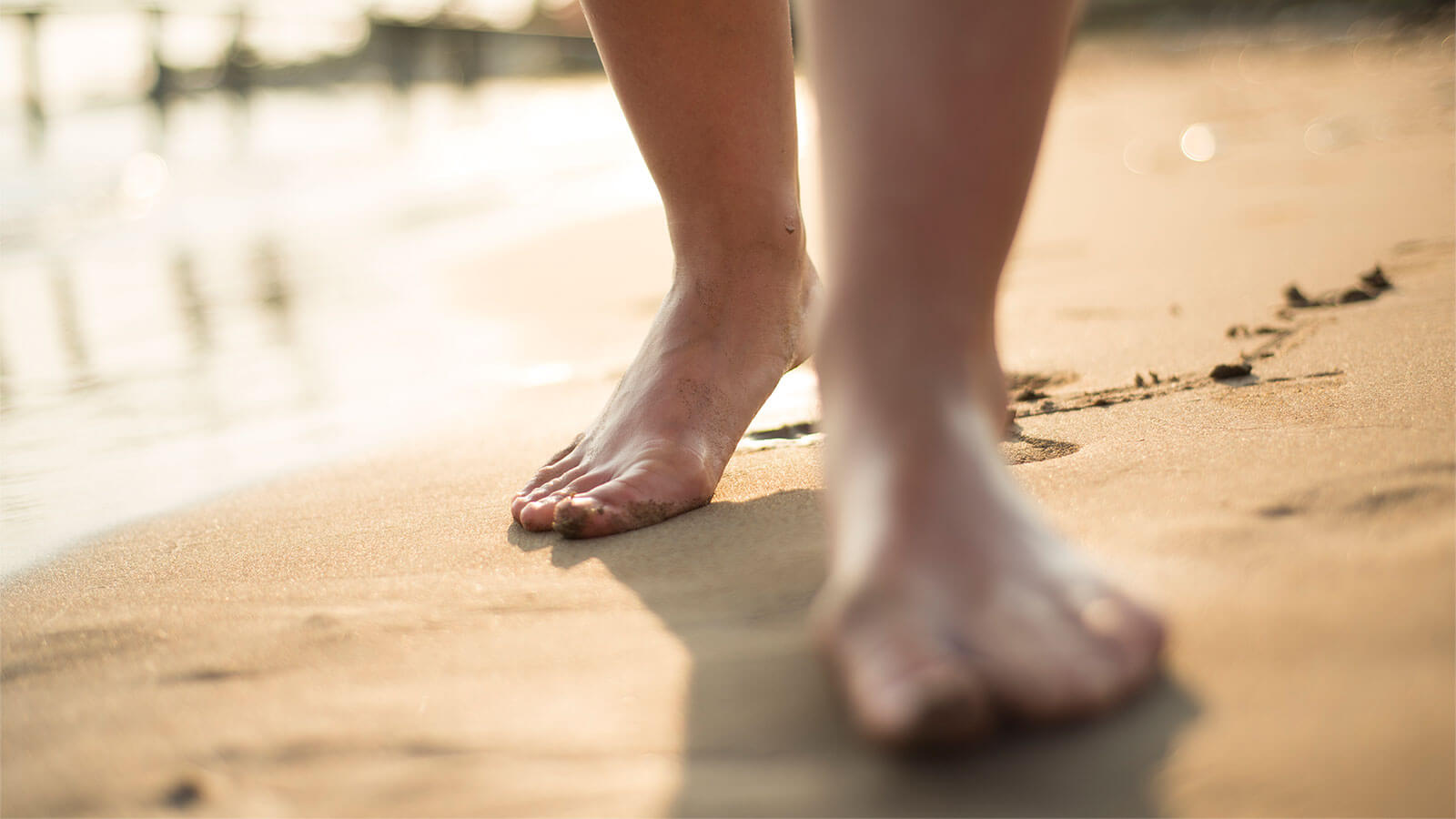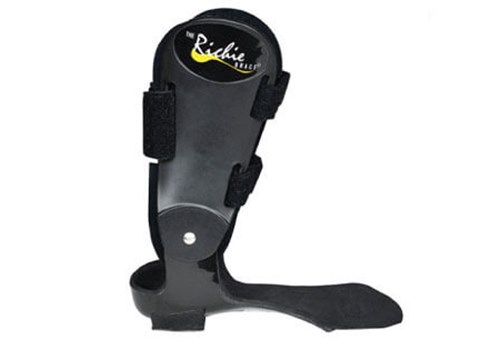
What Is An Ankle Brace For?
An ankle brace is a garment that is worn around the ankle to protect it and for immobilization while allowing it to heal from sprains or other injuries. Ankle braces are used to immobilize the joint while providing heat and compression to the bones. They are common in injury rehabilitation processes that affect the ankle.
In rehabilitation ankle braces are used to immobilize the ankle in a neutral position, which "theoretically minimizes stress at the repair site". Finally, are used in sports where the ankle is under stress, as in foot ball, soccer, tennis and other demanding sports where full ankle mobility is required.
Types Of Ankle Braces
There are a variety of Ankle Brace technologies check out our full selection of braces here: ANKLE BRACES
Step Ahead offers leading edge treatment approaches and clinical facilities to treat ankle issues as well as all other foot ailments.
Contact us for a consultation today!
Ankle Brace Frequently Asked Questions
Question:
Will wearing an ankle brace weaken my ankle?
Answer:
Most of our Richie Ankle braces have a hinge, so they allow full up and down natural range of motion necessary to enhance performance and keep the muscles strong.
Question:
Why should I wear a brace when I already have my ankles taped and supported?
Answer:
Tape will lose significant amount of support, in fact about about 70% of its support within the first half hour of activity, this is the same challenges with Like fabric lace-up ankle braces. If you tape your ankle joint, then start to any exercise the tape will immediately start to stretch and loosen.
Unlike taping, or fabric lace up, you can easily apply an ankle brace in seconds with no help. You don’t need another person, rolls of tape and pre-wrap, or scissors to cut it off later. And since our ankle braces have a hinge and move with the natural motion of your ankle joint, the brace stays firmly in place and secure maintaining lasting protection for hours.
Question:
Should ankle braces be worn while sleeping?
Answer:
No unless our podiatrists recommend you do so.
Question:
What is ankle unloading?
Answer:
Ankle unloading is related to individuals that have weight bearing pain from a recent injury or people with osteoarthritis. Ankle unloading is the ability of the ankle brace to absorb painful ankle impact from standing or walking that causes weight bearing pain. Or ankle braces are designed to provide the support you need.
How Durable Is The Richie Brace
Why Custom Versus Pre-made Ankle Braces
Before And After Treatment
Step Ahead Podiatry Is Committed To Helping You Gain The Freedom To Walk Pain Free Again...

Richie Brace® Standard
FEATURES
- Custom balanced foot orthotic
- Standard 35mm heel cup fits into the bottom of the heel counter of the shoe
- Anatomic ankle axis hinge placement
- Semi-rigid lower limb supports
- Control of first ray, midtarsal, and subtalar joints
- Control of calcaneal inversion/eversion
- Pure, unrestricted sagittal ankle motion
CLINICAL INDICATIONS
- PTTD (mild-to-moderate)
- Lateral Ankle Instability
- Peroneal tendinopathy
- Cavo-varus deformity
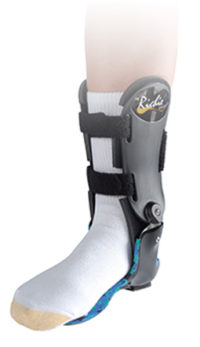
Richie Brace® Dynamic Assist
FEATURES
- Custom balanced foot orthotic
- 35mm heel cup
- Anatomic ankle axis hinge placement
- Tamarack flexural ankle joints
- Dynamic dorsiflexion-assist provides up to 15° of dorsiflexion
- Semi-rigid lower limb supports
- Control of varus/valgus alignment of the foot
- Pure, unrestricted sagittal ankle motion
CLINICAL INDICATIONS
- Dropfoot
- Peroneal Nerve Injury
- Post-CVA
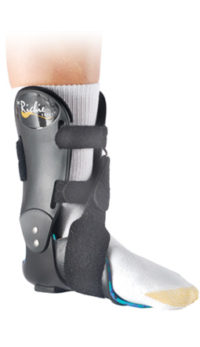
Richie Brace® with Arch Suspender
FEATURES
- Custom balanced foot orthotic
- Standard 35mm heel cup fits into the bottom of the heel counter of the shoe
- Anatomic ankle axis hinge placement
- Semi-rigid lower limb supports
- Control of first ray, midtarsal, and subtalar joints
- Control of calcaneal inversion/eversion
- Pure, unrestricted sagittal ankle motion
CLINICAL INDICATIONS
- PTTD (mild-to-moderate)
- Lateral Ankle Instability
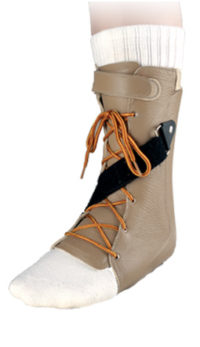
Richie Brace® Gauntlet
FEATURES
- Custom molded AFO shell
- Medial or Lateral Arch Suspender®
- Legitimate Varus/Valgus control of hindfoot
- Rearfoot stabilizing post
- Non-weight bearing cast provides better heel and arch contour
- All casts intrinsically balanced to correct forefoot varus/valgus deformities
CLINICAL INDICATIONS
- PTTD (stages III and IV)
- DJD (severe)
- Hindfoot Deformity
- Charcot Arthopathy
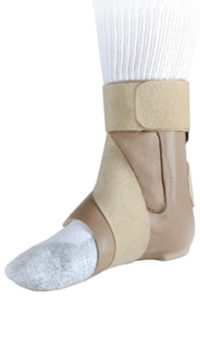
Richie Brace® California AFO
- Custom molded AFO shell
- Adjustable leather closure over tibia and forefoot
- Patented Medial or Lateral Arch Suspender®
- Rearfoot stabilizing post
- Continuous single strap closure, no laces
- Total restraint of foot and ankle movements
- Self-adjusting arch support
- Prevents medial/lateral instability
CLINICAL INDICATIONS
- PTTD (severe; stage IV)
- DJD (severe)
- Charcot Arthopathy
- Ankle Deformity
Not finding what you're looking for? Here are some of our most searched for podiatry services.
Additional Resources:
